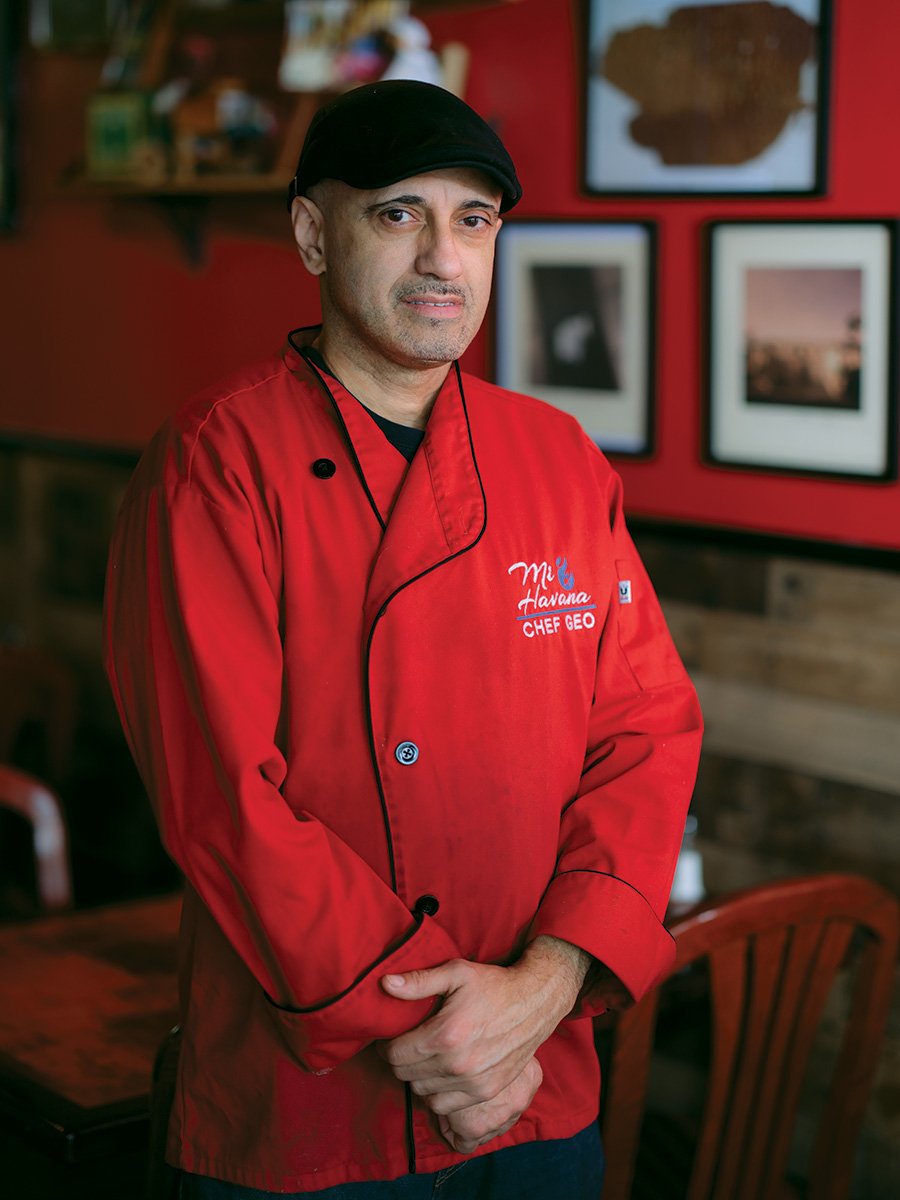
In April of 1993, the Food Network aired for the first time, and George Arce was hooked. From that moment on, he watched everything that played on the channel, learning from the greats like Emeril Lagasse, Bobby Flay, Rachael Ray and many other celebrity chefs that came over the years. Prior to discovering his interest in cooking, he worked in customer relations. “[That] has helped me in the hospitality industry and running a restaurant,” Arce shares.
The first time he found himself in a commercial kitchen was as a youth pastor when he needed to cook for a fundraiser for an upcoming youth group missions trip. That led him to help out in the church's school lunch program, working alongside the chef. Between his “foodnetwork.com education” and his work alongside the chef, Arce says, “I totally fell in love with cooking.”
As many chefs from this era have, Arce says he felt the freedom to cook. Unlike past generations, the start of the Food Network gave an empowerment to home cooks that has shaped some of our best eating experiences. His love of surrounding himself with family who enjoyed gathering over food gained momentum as he successfully ventured into the catering world and eventually took him to the small town of Emmaus, opening his new love, Mi Havana, the area's first Cuban restaurant.
With a lease signed in January of 2020 and a ribbon-cutting scheduled—and then, of course, cancelled—for April 4, 2020, Arce quickly found himself in a position to have to create a market in a new town, to be able to spread the word of his dream to have the only authentic Cuban restaurant in the Lehigh Valley. It makes one wonder, as we move further into 2022, if the influence of seeing his favorite stars back in the '90s having to convince people that they knew something you needed to eat and try and love was channeled into his approach. Through social media, word-of-mouth and the commitment to send food out that spoke from his heart and palate, he steadily created a customer base that, one by one, fell in love with the bright colors of his dishes. “I love bringing a little bit of Cuba to the people of the Lehigh Valley.”
Here, he is sharing his lechon asado (roast pork) recipe with us. The slow-roasted pork with a flavorful marinade is one of the most popular dishes at Mi Havana. Garlic, cumin and a bit of sour orange make this a dish everyone will love. If you have never experienced Cuban cuisine before, Arce describes it as “a very happy moment” and, nowadays, who doesn't need that in their life?
Mi Havana Cuban Cuisine | 1301 Chestnut St. Suite N, Emmaus | 610.966.7777 | mihavanalv.com

Ingredients
- 8–10 pound pork shoulder (also called pork picnic)
- 2 heads of garlic, peeled and divided (one head for the marinade and one head to insert in the pork)
- 2 Tbsp. coarse salt, divided (1 tsp. to break down the garlic, 1½ tsp. for the marinade, 1 Tbsp. to sprinkle on the pork)
- 1 ½ cups sour orange juice (the number of oranges to use will depend on how large and juicy
- they are—or you can purchase sour orange juice by Goya)
- 2 Tbsp. olive oil
- 1 Tbsp. dried oregano
- ¼ tsp. cumin
Instructions
Marinade
Peel the two heads of garlic. Reserve 8–10 whole garlic cloves for the pork.
Smash the remaining garlic cloves: place them on a cutting board and give them a good whack with a meat mallet or the side of a large knife.
Add the smashed garlic and 1 tsp. of salt to a mortar and pestle. Work the garlic until you break it down into small flat pieces.
Add the smashed garlic, sour orange juice, olive oil, oregano, cumin and 1½ tsp. of salt to a medium bowl or jar. Stir or shake to combine well.
Cover the jar/bowl and let the marinade sit in the refrigerator for at least one hour—a couple of hours or overnight is better. Shake or stir well before using.
Marinating the Pork
Place the pork in the pan.
Make 8–10 (as many as you have garlic cloves) small slits (about 1–2 inches deep) on the skin side of the pork.
Insert the reserved whole garlic cloves into the slits. Dip the cloves in the marinade to make inserting them easier.
Turn the pork over (skin side down) and make about 10–12 small slits (about 1–2 inches deep) in the meat.
Use a ladle or spoon and start pouring the marinade into the slits you made. Then, pour the remaining marinade over the pork. Sprinkle another 1 tsp. of salt over the pork (if desired). The marinated pork might get a grayish color, that's normal; it's the citrus working on the meat.
Turn the pork; now it should be skin side up. Add water or pork stock to the pan about ¼-inch to ½-inch high. You may have to add a bit more after 2 ½ hours of cooking, but don't let it dry up.
Cover the pan well using aluminum foil.
Marinate the pork in the refrigerator overnight, if desired; if not, straight to the oven.
Preheat the oven to 325°F.
Roast the pork for a total of 3–5 hours until the internal temperature reaches at least 170° F and the meat has pulled away from the bone on one end. About 1½–2 hours into the roasting time, tent the pork.
Once it's cooked and if it looks pale, then remove aluminum foil and let it cook for an additional half-hour until brown and a little crisp.
Published as "Beyond the Menu" in the June 2022 edition of Lehigh Valley Style magazine.
Tag @lvstylemag and #livelvstyle when you make it at home!















